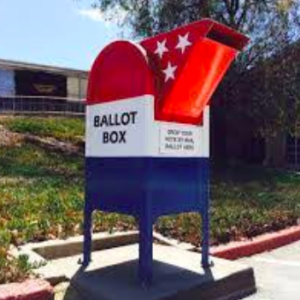Editor’s Note: For another viewpoint, see Counterpoint: America Is About to Get a Hard Lesson on Faulty Vote-By-Mail System
We recently saw people forced to choose between their personal safety and their right to vote in Wisconsin.
We still don’t know the full damage holding the Wisconsin primary without expanded mail-in voting options caused, but regardless we cannot ever let it happen again.
This year we are faced with a great challenge in ensuring every eligible voter gets access to the ballot while also keeping themselves and their loved ones safe.
This is a challenge that we can meet and overcome, but it’s going to take working together to implement solutions that may change the way we are used to voting, including by casting our ballot at home and returning it by mail.
Voting by mail is not a new idea. In fact, it’s been tried and tested in states across the country. In the 2018 midterm election, 27 percent of all voters cast their ballot by mail.
In states that have used vote-by-mail extensively, such as Colorado, Oregon, Washington, Utah and California, it has proven successful in increasing access to the ballot while also ensuring elections are fair and secure.
Vote-by-mail and early voting reforms have traditionally focused on ensuring that voters who can’t make it to the polls on Election Day because of work, school, family, health or other reasons are still able to vote. But now there are even more important reasons as we tackle the COVID-19 pandemic.
Voting by mail provides an important solution to both protect the public health and the people’s right to vote.
That’s why Republican and Democratic election officials and governors across the country are turning to vote-by-mail as a solution in this crisis — from Republican Govs. Larry Hogan of Maryland and Mike DeWine of Ohio, to Democratic Sens. Ron Wyden of Oregon and Amy Klobuchar of Minnesota.
As support for vote-by-mail has grown among voters and political leaders alike, it has also been the focus of misleading attacks by President Trump. So, let me take a minute to clear a few things up. First, there is absolutely no evidence that vote-by-mail benefits one party over the other.
It has been implemented in both Republican and Democratic states and has been deployed as an electoral strategy by both parties. In fact, GOP officials have openly admitted they used vote-by-mail as a strategy to help elect Trump in 2016.
Second, there is no evidence to suggest that vote-by-mail is less secure than in-person voting. In fact, vote-by-mail is a paper-based system that is not susceptible to cyber-hackers and can be easily audited by election officials to make sure the election results are accurate.
This is all to say that vote-by-mail is a great solution so voters do not have to pick between their right to vote and their personal safety amid a pandemic. But it can’t be the only solution. We know vote-by-mail doesn’t always work for everyone and every community.
That is especially true for Native Americans, the disability community, neighborhoods where people who speak other languages or do not have reliable postal service, or move often. We also have to make sure that when states do expand mail-in voting options, they are doing it in a way that doesn’t lead to ballots being rejected or votes being suppressed.
Ultimately, even as we expand vote-by-mail options, we must continue to employ other ways to ensure voting access to all eligible Americans — by offering voters some safe in-person voting options if possible and by expanding ways for voters to engage with the voting process.
That includes expanding early voting opportunities, promoting online voter registration, extending voter registration deadlines, and exploring more novel voting experiences like curbside, drive by and mobile voting centers. These options, along with mail-in ballots, are common-sense approaches to protect the vote in the COVID-19 crisis.
As states contend with the economic realities of a global pandemic, however, we must ensure that they have the resources to take on these new reforms. Thankfully, House Speaker Nancy Pelosi and Senate Minority Leader Chuck Schumer are now leading the important fight for additional funding for our elections.
In order to ensure voting is secure and accessible for everyone in 2020, we will need Congress to dedicate at least $4 billion in the next stimulus package. This funding will allow states to adopt systems that are the best option for their communities and voters.
The pandemic we are facing is challenging on many fronts, but we cannot let our elections — and by extension our democracy — fall victim to COVID-19. If we work together to advocate for and implement solutions like vote-by-mail and expanded early voting, we can help ensure that our democracy survives this crisis.

